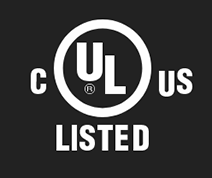Nitrogen Gas and Nanotechnology
When working with and manipulating individual molecules and atoms, the environment is of the utmost importance. Whether in the manufacturing process, the experimentation process, or the storing process, it is vital that the parts used in nanotechnology remain in dry, stable conditions. With nitrogen gas, the environment can be upheld easily. Here are just some of the ways nitrogen gas is used every day in the nanotechnology industry.
How Nitrogen Helps the Nanotechnology Industry
Working with literal molecules requires the utmost precision. As such, nitrogen gas is used in many ways throughout the industry to ensure everything remains dry and safe.
- Dry Boxes– When critical components are put into boxes for storage, their environment must be maintained so the atoms do not degrade. To make sure the atoms remain intact as needed, nitrogen is infused into the box. It will not react with the materials that are used, and it will make sure no moisture disrupts the molecules.
- Chemical Inerting – Oxygen has a potentially dangerous reaction with many chemicals. As such, nitrogen is used to displace the oxygen within chemical storage or process tanks. It will make sure the environment does not become hazardous. Nitrogen gas is also used to inert vessels for this same reason.
- Semi-Conductors– When working on the fabrication of stacked dies, rework, or component solder bumping, it is vital that oxygen is kept away. Nitrogen gas is used to blanket the components to give them a longer oxygen-free processing window. This is especially important with the new mandate of lead-free soldering because of the issue of chemistry aggressiveness. With nitrogen inerting, there is a much higher success rate, especially when the Delta T temperature window is at play.
- MEMS (Micro Electro Mechanical Systems) – In MEMS applications, a high purity of nitrogen gas is required to cut back on the dross in soldering applications. Additionally, it effectively reduces surface tension and allows the solder to break away more cleanly. Nitrogen is also used during the testing phase to make sure the atmosphere remains dry.
- Line Drying – Nitrogen’s dew point is as low as -40 degrees Fahrenheit, making it the ideal solution for line drying. Not only does it not dew easily, it is completely inert. It eliminates all oxygen so there is no risk of oxidation, and it makes sure there are no explosions.
On Site Nitrogen Generators for Nanotechnology
When it comes to nanotechnology, the option of running out of nitrogen is nonexistent. There must be a steady flow of nitrogen gas to keep the atoms and molecules at the ideal temperature to be effectively manipulated. With On Site Gas Systems, the nanotechnology industry can make their own nitrogen, on demand, making sure they never run out. There are no cylinders to deal with, no storage to worry about, and an extremely high ROI.
To learn more about how our on site nitrogen gas generators can help you, contact us now.



